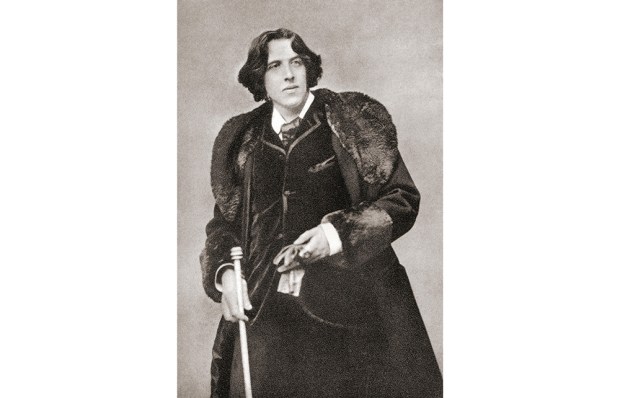On 27 November 1960 African and Indian diplomats visiting the UN in New York opened their mail to find a leaflet from the Ku Klux Clan:
A foul stench spreads out from the East River and hangs over New York like a pall — the greasy sweat of the Black Races and the Yellow Races of Asia which have invaded the United Nations. It is enough to make every White Protestant American vomit.
It ended with a threat: the delegates better stay close to the UN buildings and the ‘brothels of Harlem, and not defile the hotels and restaurants of the White City’.
FBI officers investigating the correspondence noted a couple of oddities. First, some of the language was off: it called for delegates to be ‘tanned and feathered’ rather than ‘tarred and feathered’. Then there was the timing: the letters arrived a day before the General Assembly was set to debate colonialism, in response to the Soviet leader Nikita Khrushchev’s demand that all colonial people be given independence.
In Active Measures, a mind-bending history of disinformation campaigns, Thomas Rid, a professor at Johns Hopkins, reveals that the KKK leaflet was one of thousands of forgeries created by the Soviet Union and its allies in the Cold War in order to exacerbate ‘even the smallest rift between enemies’. At the same time, Soviet secret services were also playing the other side of racial tensions. A front organisation called the African Friends Association cast doubt on US claims to help African countries:
We, Negroes living in the United States of America, are going to reveal the truth to you about the way Americans really treat people with dark skin.
Rid begins his story with early Bolshevik plots to ensnare White Russian emigrés, and takes us through to Putin’s online hacks and leaks of Western politicians’ emails. Not all ‘disinformation’ operations are about deceptive content, Rid notes; sometimes it’s the behaviour of the actor behind the operation that is the deceptive part. All the perpetrators care about is the effect. That effect can be direct and easy to measure. When, in 1951, the CIA sent shopowners in East Germany fake letters purportedly from the government in East Berlin, instructing them urgently to sell off goods at low prices, it created shortages. When, in 1972, the Stasi bribed and bamboozled two German MPs to abstain from a vote of confidence in chancellor Willy Brandt, they got to keep their favoured candidate in power, despite the odds. But it’s harder to measure the cumulative effect of long-term campaigns that play into existing social divides. Rid is keen to point out that disinformation bosses like to make exaggerated claims of their successes as crassly as any PR flack.
Most of the book is about Soviet bloc operations, for whom this sort of political warfare became ever more important as their soft power waned. The less anyone believed in the communist dream, the more they had to work to smear their enemies instead. These days Putin’s Russia doesn’t even try very hard to be a beacon on a hill.It just wants everyone to look as rotten as itself. The Kremlin’s renewed efforts will ensure that Active Measures appears on the reading list of government officials and security experts. But it would be a disservice to reduce it to such a narrow space. For this is a book about something much bigger: our relationship with truth and our desire for lies.
Rid repeatedly shows how even shoddily produced disinformation gets traction if it resonates with what the target audience wants to hear. When Western peace activists in the 1960s were handed ‘evidence’ of American ‘plans’ to launch war in Europe, they decided that it didn’t matter if they were looking at a forgery, as ‘we can guess there is a document almost exactly like it’. In a more insidious way, Western media today lap up Kremlin hacks of our politicians because it satisfies the need for salacious stories — whatever the context.
The most dextrous disinformation unlocks horrible truths about our hidden attitudes. In the decades after the second world war the KGB sensed that the West had not coped with its historical anti-Semitism. Maybe a little encouragement would help to bring the poison back to the surface and get the Western allies accusing each other of housing Nazis?
The KGB first experimented back home: they daubed Nazi slogans in a village near Moscow. Most locals were shocked, but a small number were inspired to become anti-Semitic activists all on their own. The campaign was rolled out internationally. Swastikas appeared on synagogues in West Germany and the US. Jewish families received hate mail. Anti-Semitic leaflets were printed — and were soon being enthusiastically shared.
Got something to add? Join the discussion and comment below.
Get 10 issues for just $10
Subscribe to The Spectator Australia today for the next 10 magazine issues, plus full online access, for just $10.
You might disagree with half of it, but you’ll enjoy reading all of it. Try your first month for free, then just $2 a week for the remainder of your first year.














Comments
Don't miss out
Join the conversation with other Spectator Australia readers. Subscribe to leave a comment.
SUBSCRIBEAlready a subscriber? Log in